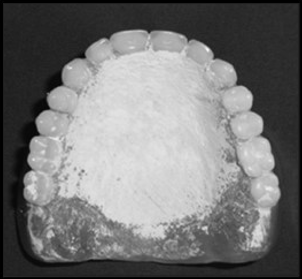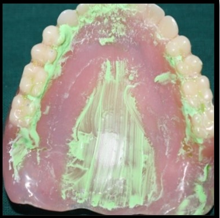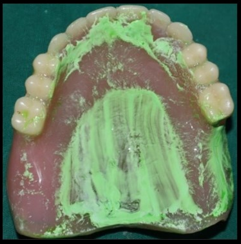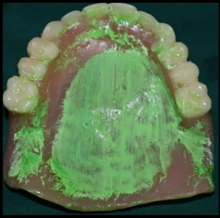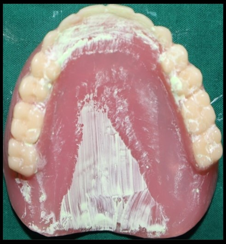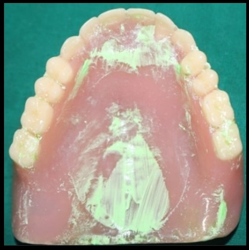Introduction
Phonetics is of paramount importance in the field of prosthodontics, constituting a fundamental aspect of prosthesis fabrication.1 Its diverse applications encompass several critical functions. Primarily, phonetics assists in determining the closest speaking space,2 thereby providing essential insights for the precise placement of prosthetic devices. McCord JF, Firestone HJ, and Grant AA3 underscored the significance of phonetics in the design of complete dentures, highlighting its role in determining the positioning of anterior teeth, establishing the vertical dimension,4 setting the occlusal plane level, and designing the palatal vault to ensure accurate alignment and fit of the prosthesis. Furthermore, phonetics is integral in measuring the thickness of denture bases, which is crucial for comfort and functionality. It also aids in evaluating tooth exposure during speech, thereby guiding necessary adjustments for natural articulation.
Pound et al.,5 proposed a methodology for addressing phonetic issues based on the premise that phonetics is influenced by esthetics. This methodology entails not only placing the teeth in their correct positions but also accurately reproducing supporting structures such as the interdental papillae. Additionally, phonetics serves as a valuable tool in assessing the efficacy of the prosthesis in facilitating clear and understandable speech, thereby ensuring optimal patient communication and satisfaction.
Consequently, phonetics plays a critical role in the fabrication of complete dentures. This study focuses on this aspect of denture fabrication, employing the palatogram method for phonetic evaluation. The phonetic sounds used were Tamil phonetic sounds such as "SH," "N," "G," "K," AND "CH." These sounds were selected based on the key article "Palatogram Revisited" by Jain et al. Although the study focused on Tamil phonetic sounds "SH," "N," "G," "K," AND "CH," this article primarily examines the Tamil phonetic sound "G" and its influence.6
Palatogram
A palatogram is a graphic representation of the area of the palate contacted by the tongue during a specified activity, usually speech.7 Its inception traces back to J. Oakley Coles, who pioneered its use in 1871, marking the initial application of palatograms in phonetic analysis. Palatogram patterns are obtained from each individual for a specific sound and can be used as a reference. 1 The uniqueness of these patterns across different individuals can be attributed to anatomical variations such as tongue size, arch shape and size, and palatal contours. Palatograms serve as a guiding tool for modifying and customizing palatal contours to correct speech deficiencies and reduce the adaptation period to new prostheses. 8
Various other recording media can be used are: Gothic arch tracing ink, Pressure indicating media, light body impression material Powders‑gypsum products, talc, alginate, Occlude aerosol, Impression waxes, tissue‑conditioning material. 6
Phonology of Tamil language
Tamil phonology is distinguished by the presence of "true-subapical" retroflex consonants and a variety of rhotic consonants. The script does not differentiate between voiced and voiceless consonants; instead, voicing is determined by the consonant's position within a word. Consonants are voiced when they appear between vowels and after nasals. 9
Palatolingual sounds are created through the interaction between the tongue and the soft palate, including the phonemes /k/, /ng/, and /g/. Here's how each sound is produced:
/k/: Formed by lifting the back of the tongue to touch the soft palate, creating a closure. When the tongue is quickly lowered, the air is released in a burst. This is a typical plosive consonant.10
/g/: Similar to /k/, but voiced. The back of the tongue touches the soft palate, creating a closure, while the vocal cords vibrate.11 If the back edge of the upper denture is too long or doesn't firmly contact the tissue at the posterior palatal seal, it can impact the sound's clarity. This is because the denture can disrupt the tongue's movement and its proper closure with the soft palate.
Inclusion criteria
The study was conducted on completely edentulous patients under 65 years of age, encompassing both male and female subjects. The treatment protocol was thoroughly explained to each patient and informed written consent was obtained. Participants were selected from the Outpatient Department of Adhiparasakthi Dental College and Hospital, Melmaruvathur.
Materials and Methods
This study involved completely edentulous complete denture wearers. To evaluate phonetic articulation, various sounds were tested, along with the phonemes/k/ and /g/. The Tamil words "KAAKKA" (representing the /k/ sound) and "JEEVAN" (representing the /g/ sound) were selected for this assessment. 6 the complete denture was fabricated by using the conventional method where the preliminary impression and final impression were done, jaw relation was done, try in with wax trial denture was done followed by denture fabrication and the dentures were trimmed, polished and insertion was done. The dentures were then assessed using phonetic sounds, and palatographic readings were taken. The patient was instructed to pronounce specific Tamil words no more than twice before the dentures were removed for evaluation.
The study investigated the palatographic patterns of 10 individuals, using zinc oxide, 8 green food colouring, 12 and saline 8 as marking agents. Palatograms were obtained for specific sounds and analyzed to examine articulation patterns. The palatograms of the English phonetic sounds/k/ (Figure 1) and /g/ (Figure 2) were considered for comparison and evaluation. The palatograms were photographed using a Canon Mark II camera and cropped to uniform measurements. The photographs were divided into grids and analyzed to identify regions where the marking agents were removed and where they remained. The analysis revealed that, contrary to expectations, the marking agents were removed from a more apical region rather than the anticipated posterior palatal region
The palatogram obtained from the /k/ sound closely resembled those from the selected English consonant references (Figure 1), indicating a velar articulation pattern. However, the palatogram for the /g/ sound showed a distinct palatolingual pattern instead of a velar one. Based on the palatographic study conducted so far, the palatogram for /g/ should have been similar to that of /k/, but it was not. This discrepancy suggests that further studies and evaluations are necessary. Additionally, the palatogram did not indicate a velar sound for any of the 10 patients examined (Figure 3, Figure 4, Figure 5, Figure 6, Figure 7).
Result
In the evaluation of all ten patients, the palatogram for the Tamil consonant "G" did not exhibit a pattern consistent with that of the English consonant "G." The palatogram of the Tamil sound demonstrated characteristics more aligned with a palatolingual articulation rather than a velar one, highlighting linguistic differences between the two languages.
Figure 1
Palatogram of K. (After borden, R. C., and busee, A. CL.: Speech correction, New York, 1925, F. S. Crofts &co., inc., By permission of appleton-century-crofts, inc).10, 13

Findings from the study:
Palatogram obtained by using the sound "G":
Discussion
The discussion revolves around the findings of a study on palatograms, focusing on the consonant 'G' and its palatolingual pattern. Here are the key points and implications:
Palatograms and 'G' consonant
The study found that the palatograms for the consonant 'G' exhibited a more palatolingual pattern. This suggests that the way 'G' is pronounced may vary depending on the context and possibly the accompanying vowels.
Concept of allophones
Allophones14 are different pronunciations of the same phoneme in different contexts. The variability in palatograms for 'G' could be attributed to allophonic variations influenced by adjacent sounds, such as vowels.
Focus on english consonants
Most palatogram studies have predominantly used English consonants. This focus may not adequately represent the phonetic diversity found in regional languages and dialects worldwide.
Regional and dialectal variations
The article draws a parallel with a study by João Malta et al., which highlighted how phonetic evaluations in languages like Spanish can be influenced by regional variations (e.g., 's' and 'θ').15 Similarly, the pronunciation of 'g' could vary significantly in different languages and dialects.
Limitations of phonetic evaluation
Using palatograms and phonetic evaluations based solely on English phonetics as a standard might be misleading when applied to other languages. The consonant 'g' serves as an example of how such evaluations could be context-dependent and influenced by vowel contexts.
Advantages of the Study
The study utilized the palatogram technique, which is easy to perform, requires good patient cooperation, and is less expensive compared to other speech evaluation methods like electropalatographic methods and spectrometry. Additionally, the study focused on the use of Tamil phonetics, a regional language spoken in the area where the study was conducted, making it easier for the patients to participate.
Limitations of the Study
The study was conducted with a small sample size of 10 individuals wearing complete dentures. Therefore, it is recommended to expand the study to include a larger and more diverse population for increased generalizability. To enhance the study's methodology, utilizing advanced techniques such as electropalatographic and spectrographic analysis could further refine the evaluation of tongue-palate interactions.
Additionally, future research should extend beyond complete denture wearers to encompass individuals with removable partial dentures, implant-supported prostheses, and those using 3D-printed or milled prostheses. This approach would provide a comprehensive understanding of how different types of dental prostheses affect oral function and speech patterns.
Need for the Study
Most studies in the field of phonetics have utilized English phonetic sounds and the English language. However, this approach is not universally applicable due to the vast diversity of languages and dialects worldwide. This highlights the necessity for further research in
phonetics, as no single criterion or palatographic finding can be standardized across all languages.
As healthcare quality improves and the ageing population grows, the demand for better dental care will also increase. This demand extends not only to completely edentulous patients undergoing conventional removable prosthetics but also to those needing fixed prosthetics. Although speech is a learned habit and patients typically adapt to prostheses over time, incorporating phonetics into the design of prostheses can significantly reduce the adaptation period.
Conclusion
The study underscores the intricate nature of phonetic variation, particularly in the pronunciation of consonants like 'G' across diverse linguistic contexts. It highlights the critical importance of expanding research to encompass a broad spectrum of languages and dialects. This approach is essential for advancing our understanding of phonetics beyond the limitations typically associated with studies primarily centred on English.


